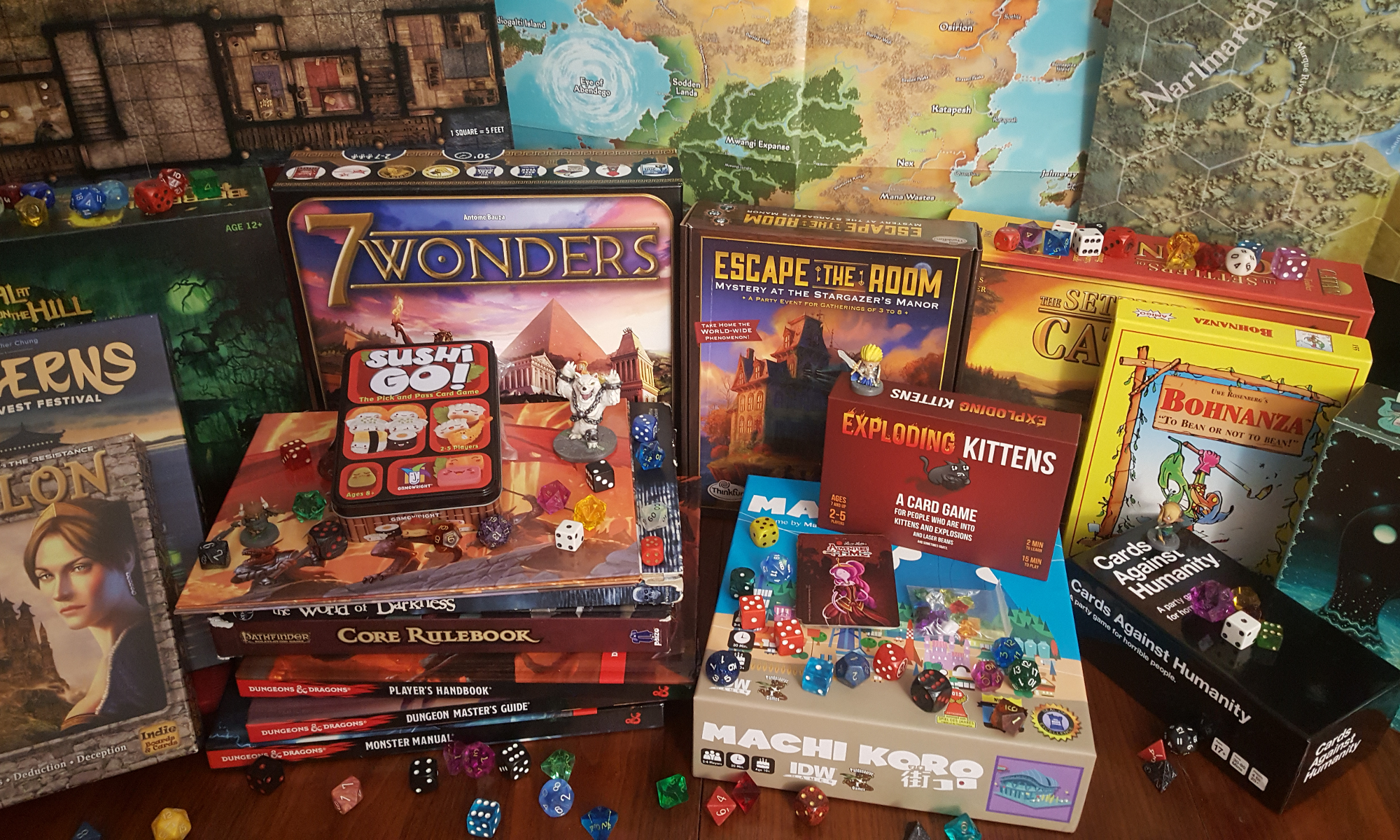Today’s episode of Save Vs. Rant is about making one time exceptions for the awesome things that happen in your RPGs as a way of rewarding creativity by your players and generally promoting a more interesting game. Join us as we discuss this more or less universal gaming phenomenon!
Almost every game has a built-in framework for integrating Rule of Cool style material in the game. In many games, these are called “circumstantial modifiers,” which are fiat bonuses (or penalties) given to situations where things beyond the raw skill, abilities and equipment of the character meaningfully influence the outcome. In short, the DM simply decides the situation is favorable or unfavorable, selects the bonus or penalty from a proscribed range, and applies in.
Strangely enough – and, yes, this is a tangential rant – a large number of games generally agree that the range is +/- 1 to 5 even though what such a bonus or penalty actually represents varies between systems. In D&D, for example, +3 gives a +15% change of success on any given d20 roll (provided it doesn’t create a situation where only a 1 fails), while in World of Darkness’s Storytelling / Chronicles of Darkness system, that same +3 bonus represents an average of 1 success and a variable improvement to the odds depending on how many dice were already in the pool. Here’s a great article from AnyDice that goes over it with charts and everything! Only rolling 1 die? +3 is a HUGE bonus that will probably spell the difference between success and failure. Rolling 7 dice? That +3 is just a drop in the bucket that doesn’t significantly increase your chances of any success (but DOES significantly increase your chances of an Exceptional Success). Strangely, though, both systems recommend that same range of 11 circumstantial modifiers (including the most commonly used modifier of 0). Huh.
Back to the topic at hang – what is cool? You might think that cool is entirely subjective, and you would, of course, be extremely wrong. That’s not to say there’s no subjective elements to what is cool, but, as a general rule, we can describe “cool” actions in terms of how they represent a departure from the norm in favor of what’s unexpected, bold and exciting. Let’s break that down.
The Unexpected: There is an unfortunate phase that almost everyone goes through wherein they think of bizarre, random and arbitrary as being synonymous with “unexpected,” and, in a sense, they’re right. Assaulting a dragon with a rubber chicken, for example, is in fact unexpected, but definitely not cool (well, not by default – there’s probably some hyperbolic circumstance where everyone agrees it is awesome, but that’s not what we’re on about at the moment). What we mean by the unexpected is “that which follows logically, but that is not the most obvious choice.” Ideally, something that preempts the foregone conclusion of the situation’s outcome by subverting typical expectations – wow! What a mouthful! One example that has been, to some degree, beaten to death in cinema, television and literature is where a character evades a dead end situation through a clever solution.
Consider a few examples: (all of these are spoilers, of course)
- In 2014’s Captain America: Winter Soldier
- In 2010’s Salt
- In 1991’s Silence of the Lambs
Unexpected methods of escape – automatically cool. All of these are great candidates for the Rule of Cool, be it by way of a saving throw to resist damage, a crafts check to determine if a jury rigged solution works, or a series of disguise, bluff and stealth checks.
The Bold: Sometimes, it can pay to reward players for taking the direct approach. Video games – especially CRPGs where multiple saves are permitted (or where save scumming is possible) – have spoiled players into timidity. Often, dangerous, bold or brazen decisions are undertaken with extreme caution or avoided altogether in tabletop RPGs, typically out of fear that a beloved character will be lost or ruined. One way to reawaken this spark in the players is to consider the old adage “fortune favors the bold” and literally favor players who make bold decisions. A number of games have officially integrated ways to favor risk taking and bold play. D&D 4th Edition granted Action Points to parties that forewent the opportunity for extended rest. 5th Edition’s Inspiration and Hero Points systems likewise reward actions that otherwise may not be the optimal choice. In all three editions of White Wolf’s horror role playing games (Old World of Darkness, New World of Darkness and Chronicles of Darkness) players are specifically rewarded with Willpower and / or experience for playing to archetypes that represent their character’s flaws and personality.
Beyond official systems, however, consider throwing your players a proverbial bone for choosing to take actions that might be risky, difficult or sub-optimal but achieve their goals in a way that doesn’t rely too heavily on controlling every element of the system. Maybe allow them to dictate some useful aspect of the scene. If during the course of a very risky infiltration they ask about whether a chair has metal legs, for example, you might consider asking why they would want (or not want) it to have them, then allow the answer that is more favorable or determine randomly (in the open for all to see) whether it does (“If this die comes up even, they went with cheap plastic chairs”). By doing so, you will promote a style of play that will empower your players to be bolder, make cinematic moments more common and hopefully make your games that much more entertaining as a result.
Exciting: Ok, maybe this is a bit redundant to the Bold point above, but one of the biggest draws of roleplaying is the ability to experience something larger than life, unique or outside one’s threshold of ability or risk tolerance. While your players, as real flesh-and-blood humans might be reluctant to face a dragon in combat, the player characters are not so limited.
An interesting scenario that frequently comes up in action and combat oriented games is a situation where the player characters are involved in a large conflict such as a battlefield, siege or other mass combat situation. While almost every modern game system has some way of resolving this scenario, most of them revolve around a fairly simple set of rules that don’t provide a great deal of excitement. Many games (Pathfinder RPG, for instance) essentially break down the participating groups into individual creatures that then engage in a single symbolic combat that determines the outcome. This is a good system if you just need to figure out whether a small army of trolls can best a much larger army of human irregulars, but it’s not especially cinematic and it doesn’t emphasize the player characters well. A system I have used, and that I recommend you consider drawing inspiration from, is one wherein I resolve the combat between these two groups, then pit the player characters against a symbolic representation of the army which I nickname the “Showdown.” Typically, I’ll plan the Showdown as a “fair” fight with a representative group of enemies (six troll warriors and a leader, for example), then modify this conflict based on how the symbolic conflict between the armies resolved (which, in turn, represents the conflict up until this final symbolic Showdown). If, for example, the fight was very close with a very narrow troll victory, I might simply inform the player characters that they have to begin the fight with the trolls at near-melee range with weapons drawn but no time to cast augmentive or defensive spells. If the trolls badly beat the army, I might inform them that they will each take a number of d6 points of damage equal to 1/3 the troll army’s remaining hps, but that they may spend spells, magic item uses or other resources of remove dice from this pool of damage. Finally, if the conflict went especially poorly for the trolls, I might give the player characters a round (or several rounds) worth of prep time before they place their characters on the field and, further, might even handicap the trolls. Importantly, I have been open to suggestions from my players as to how best to represent the dominance or desperation of the party and, as always, I would like to stress that it’s almost always better to say “yes, and” than “no, but.”
Perhaps, someday, I’ll actually codify the complexities of this Showdown system into a set of concrete rules, but for now I’m quite content to use a fairly dull framework (in this case, the mass combat resolution) to spice up a genuinely exciting part of the game (a combat encounter) and make the player characters feel more important. Excitement, in a sense, is a recognition of the importance and significance of events. It’s hard – if not impossible – to get excited about something where the outcome is known, does not matter and cannot be influenced, and much easier to get excited about something you directly influence. Anything that gives influence over a situation to the players tends to increase the excitement of a situation.
Consider those aspects when deciding how best to represent the Rule of Cool in your game, and remember that every player wants an opportunity to shine, to feel cool and important, and to let their creativity show.

